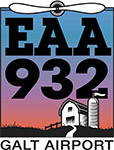When you fly IFR using a non-WAAS GPS as your primary navigation system you are required to do a RAIM prediction check for your route before each flight. If RAIM is predicted to be unavailable, you must use other navigation systems or delay or cancel your flight.
This type of GPS, certified under TSO-C129 or TSO-C196, uses receiver autonomous integrity monitoring (RAIM) to continuously monitor and compare signals from multiple satellites to ensure signal accuracy.
Basic GPS positioning requires 4 satellites (or 3 satellites and a barometric altimeter) to provide a three dimensional position. RAIM integrity monitoring requires 5 satellites (or 4 satellites and a barometric altimeter) to be available. A RAIM prediction check verifies whether the required number of satellites will be in view at a particular waypoint at a specified time.
WAAS-equipped GPS receivers (certified under TSO-C145 or TSO-C146) use ground-based stations to measure position errors and send correction signals back to GPS receivers. Therefore, if you have a WAAS GPS receiver, RAIM checks are not required unless you lose WAAS coverage or you are out of the coverage area.
You can verify that RAIM will be available by checking NOTAMs (https://notams.aim.faa.gov/notamSearch), using the FAA Service Availability Prediction Tool (SAPT) at https://sapt.faa.gov), or using the RAIM prediction function in your GPS receiver. Additionally, if you use ForeFlight’s Performance Plus or Business Performance plans RAIM prediction along your route of flight will be displayed in the Navlog.
During your flight your GPS receiver will provide an alert message if RAIM capability is lost. If you see this message you must immediately begin to actively monitor an alternate means of navigation. This is a great reason to maintain your proficiency in using VORs and always have a VOR facility tuned in as a backup.
Beth Rehm, CFI

